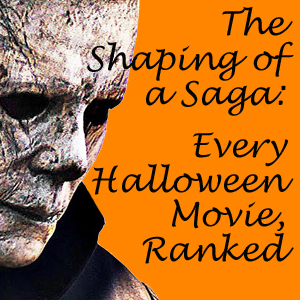Michael Myers is about to return for “Halloween Kills,” the franchise’s 12th outing and third on this particular timeline (following John Carpenter’s original and 2018’s direct sequel – both called “Halloween”). It seems a good time to rank the films, which cover five distinct timelines, four with Michael and three of which feature Jamie Lee Curtis as Laurie Strode. (That’s right: She has now played three versions of Laurie.)
Movies are listed from rotten jack-o-lantern to tasty pumpkin pie. Click on the title to read my full review of the film. SPOILERS FOLLOW.
(Updated Oct. 18, 2021, with “Halloween Kills.)
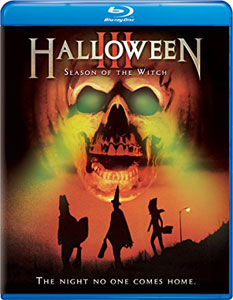
12. “Halloween III: Season of the Witch” (1982)
In the oddest duck of a saga with a perpetually odd narrative, Carpenter invites writer-director Tommy Lee Wallace to start “Halloween’s” anthology portion. Except that fans rejected it, so this ends up being the only non-Michael Myers entry. The sci-fi concept is shopworn but not without possibilities: People are being possessed by their TVs. The kid melting and having snakes and bugs crawling out of his corpse is pretty memorable. The main characters aren’t. One is an (admittedly Carpenterian) drunkard-turned-hero (Tom Atkins), the other is a young woman (Stacey Nelkin) who drops out of the narrative for the sake of a cheesy and predictable twist.
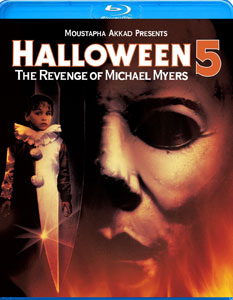
11. “Halloween 5: The Revenge of Michael Myers” (1989)
Director Dominique Othenin-Girard’s name is spelled wrong in the credits, and it’s downhill from there in a film that’s disappointing both for what it is and for what it isn’t. “Halloween 4” memorably ended by suggesting niece Jamie (excellent child actress Danielle Harris) is following in Michael’s mass-murdering footsteps. The three-writer screenplay retcons that to say Michael was controlling her. Yet now he’s not controlling her. “H5” is also bad on its own merits. It has one likable teen – Ellie Cornell, returning from part four – but she’s the first victim. That leaves us with a bunch of jerks. It’s a cliche for a reason: If we don’t care about the characters, we don’t care about what’s happening. Not that what’s happening makes much sense: Who is Michael aiming for revenge against, anyway?
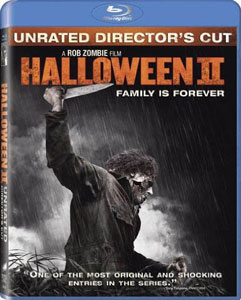
10. Rob Zombie’s “Halloween II” (2009)
I’m one of the few people who celebrates Zombie’s “Halloween” remake, and lingering love for that film makes me keep the sequel from the very bottom of this list. The emotionally wrenching origin story and twists of the first entry give way to Laurie’s (Scout Taylor-Compton) humorless, darkly lit quest to scrape out a life after the horrors she has experienced. It’s hopeless from the start, as Michael comes back and kills every last person she cares about, driving her insane. There’s something to be said about Zombie’s “Halloween II” as a portrait of despair and doom. And one could make a case that the film is well-made on some technical grounds. But that doesn’t change the fact that I never want to watch it again.
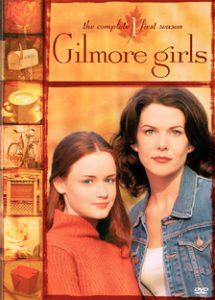
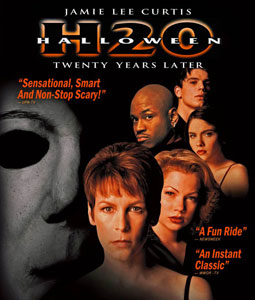
9. “Halloween H20: 20 Years Later” (1998)
This direct sequel to Carpenter’s “Halloween II” – one that continues with Curtis’ Strode rather than killing her off-screen – is the slickest of the franchise up to this point. But slicker doesn’t mean better. When it came out, I compared “H20” to other wake-of-“Scream” hits, and it’s mediocre by that measurement. Director Steve Miner (a veteran of the “Friday the 13th” saga) and his team aim to make Michael into a relentlessly stalking “Shape” again, so we focus on Laurie being terrified for herself and her son (Josh Hartnett). To me, that’s not as interesting as digging into Michael’s motivations and thoughts, as the initial batch of sequels did. But hey, we can all choose our own adventure now.
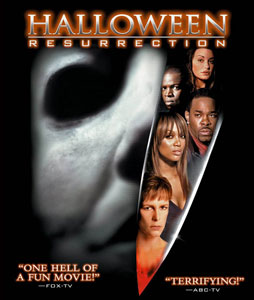
8. “Halloween: Resurrection” (2002)
Curtis’ purpose in doing “H20” was to wrap a “Laurie trilogy,” so it’s surprising that she’s back here. But it’s only briefly, for the sake of Michael killing her. Then a new story begins, and I think that’s why people hate this movie, which finds “Halloween II’s” (1981) Rick Rosenthal returning to the director’s chair. Sure, it features Michael doing his thing, and it peeks into his two-decade Lost Weekend of living in tunnels under his childhood home. But he has no connection to the victims – a gaggle of young people doing a haunted-house reality show. He’s basically doing pest-control in his home. In a vacuum, though, “Resurrection” is a funny commentary on the notion of life and death as cheap entertainment.
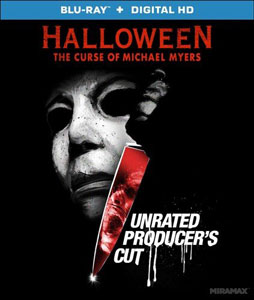
7. “Halloween 6: The Curse of Michael Myers” (1995, 2014)
If you’ve only seen the theatrical cut, which ends with a totally inexplicable third act, you’ll wonder why I’m ranking this so high. It’s because of the producer’s cut, which redeems the project enough that it’s a reasonably satisfying conclusion to the “Jamie trilogy.” Don’t get me wrong, it’s still silly, as we go deep into the weeds of how Michael is a supernatural being created by a cult, and the father (!) of Jamie. And it’s unsatisfying that another actress (J.C. Brandy) takes over the Jamie role from Harris; I don’t know if it’s good or bad that Jamie is at least dispatched early. We meet several forgettable Strodes, nominally keeping the family theme going. But it’s Paul Rudd – as will be his wont throughout his career — who gives the movie some heart as the grown-up Tommy, whom Laurie babysat in the 1978 film.
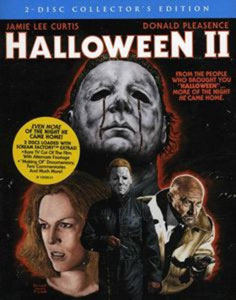
6. “Halloween II” (1981)
The idea of Michael and Laurie being siblings isn’t stupid in and of itself, but it’s certainly clunky that they learn of this connection via simultaneous dreams. Carpenter (who co-writes but hands directing duties to Rosenthal) was so irked by his own choice to make them siblings that he would later champion 2018’s “Halloween” – essentially an alternate “Halloween II,” only 40 years later instead of later that night. A sequel directly continuing from the previous entry was common in the ’70s. Here, it’s essentially a long “one last scare.” Indeed, it feels long, and we’re always aware that “Halloween II” exists because there’s money to be made rather than story to tell. Still, Curtis is again outstanding at showing fear – and she’s particularly vulnerable as a drugged-up hospital patient. Simply as a slasher, the first sequel holds up.
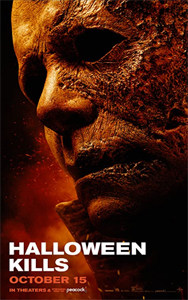
5. “Halloween Kills” (2021)
This sequel to Blumhouse’s “Halloween” continues the “H40” trilogy (to be capped with 2022’s “Halloween Ends”) in unfocused fashion. Piece by piece, it has cool things, most notably the flashback to 1978 that fills in the plot hole of the cops’ initial apprehension of Michael. It has suitable mood as we go deep into the night of Halloween 2018 with rude trick-or-treaters, an irate vigilante mob, plenty of vicious killings and … record scratch … Laurie stuck in the hospital. This riff on 1981’s night-at-the-hospital “Halloween II” eventually sets up Tommy (Michael Anthony Hall) and Karen (Judy Greer) as mediocre main characters. Laurie and Officer Hawkins (Will Patton) – established as having his own decades-long grudge against Myers — are essentially on the shelf until “Halloween Ends.” It might pay off, but for now, one can’t help but be a little disappointed.
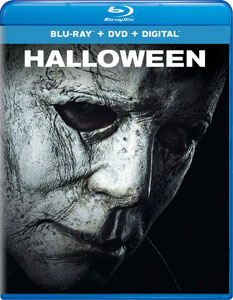
4. Blumhouse’s “Halloween” (2018)
The franchise embarks on its fifth distinct continuity, and its third timeline with Curtis as Laurie. Director/co-writer David Gordon Green is a longtime fan of the saga who longed to see a sequel where Michael is simply “The Shape” and not Laurie’s brother. So “H40” is a direct sequel to Carpenter’s original, 40 years later. That creates a plot hole, as Michael’s apprehension by authorities happens off-screen. But generally, “H40” is a nice mix of smart homages and a purist take on the villain. Curtis has a blast sinking her teeth into a prepper grandmother version of Laurie as three generations of Strode women (Judy Greer and Andi Matichak join Curtis) bury the hatchet and team up against the monster.
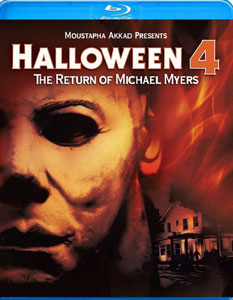
3. “Halloween 4: The Return of Michael Myers” (1988)
The absence of Laurie – who dies off-screen between films – hurts this entry out of the gates. But then writer Alan B. McElroy and director Dwight H. Little go out and make a fast-moving yet moody thriller. People behave with rare intelligence for a slasher film, for instance locking down a house against Michael’s depredations. Harris gives an amazing debut performance as a rare horror-flick kid who is not herself creepy, but instead terrified, and with good reason. “H4” is due for a remastering, as it’s shot too darkly, although one could argue that adds to the mood. It wraps with the saga’s best ending, hinting at the kid being touched by evil after all – and asking us to view it differently on rewatches. That “H5” fumbled the handoff shouldn’t negate the greatness of this one.

2. “Halloween” (1978)
To say director/co-writer Carpenter’s film is the first slasher is to unfairly ignore “The Texas Chain Saw Massacre” and “Black Christmas.” But it’s definitely a slasher codifier, as the rules outlined by Randy in “Scream” are present and accounted for: people saying “I’ll be right back,” being killed for having sex, and running upstairs to escape the killer. Curtis, the daughter of “Psycho’s” Janet Leigh, becomes the iconic Final Girl, a normal teen who is understandably terrified of Michael but who keeps enough of a cool head to have a chance at escape. But a lot of newer films have these things, so what makes “Halloween” such a magnetic viewing experience four decades later? Carpenter’s simple yet classic score. It’s almost scarier than Michael himself. If only Laurie could hear it and be warned of his approach.
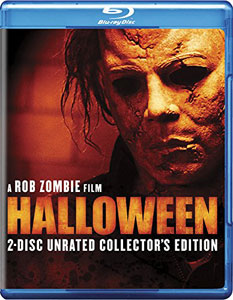
1. Rob Zombie’s “Halloween” (2007)
Some people hate this film for not being Carpenter’s “Halloween,” and that’s fine. But if you’re up for an alternate take – which is the only reason to remake a classic – it doesn’t get any better than this. In this epic (which is a prequel and an alternate telling of the original’s events mashed into one flick), we are chillingly complicit with Michael (the huge Tyler Mane) as we see his abusive upbringing. When he starts to go too far, killing people who were neutral or even good to him (poor Danny Trejo!), we see he’s a psychopath. But it’s too late to back out now. In the second part, Taylor-Compton makes a sympathetic Laurie and we get a more detailed spin on the Halloween night killings. It’s a fun exercise in alternate-reality storytelling to cap a grim bildungsroman that puts a viewer through the wringer.
Click here to visit our Horror Zone.
Main photo: Blumhouse Productions

